Способ 1: «Командная строка»
Самый простой и быстрый способ включить или отключит функцию DEP («Предотвращение выполнения данных») – это использование консольной команды и «Командной строки». Отключать технологию следует только при активном стороннем антивирусе, поскольку она является одним из элементов защиты операционной системы. Но если функция срабатывает ложно и блокирует запуск приложений или игр, а также вызывает синий экран, тогда можно воспользоваться следующей инструкцией:
- Запустите консоль «Командная строка» от имени администратора. Для этого используйте строку системного поиска – введите название оснастки, затем выберите нужный тип запуска.
- Чтобы отключить технологию «Предотвращение выполнения данных», введите команду
bcdedit.exe/set {current} nx AlwaysOffи нажмите на клавишу «Enter». - Для включения функции DEP выполните запрос
bcdedit.exe/set {current} nx AlwaysOn.
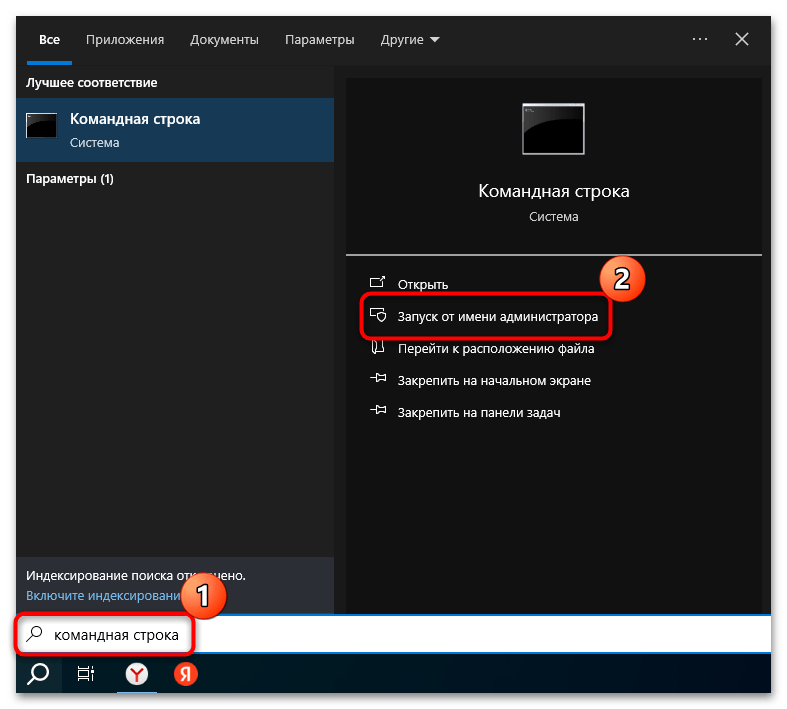
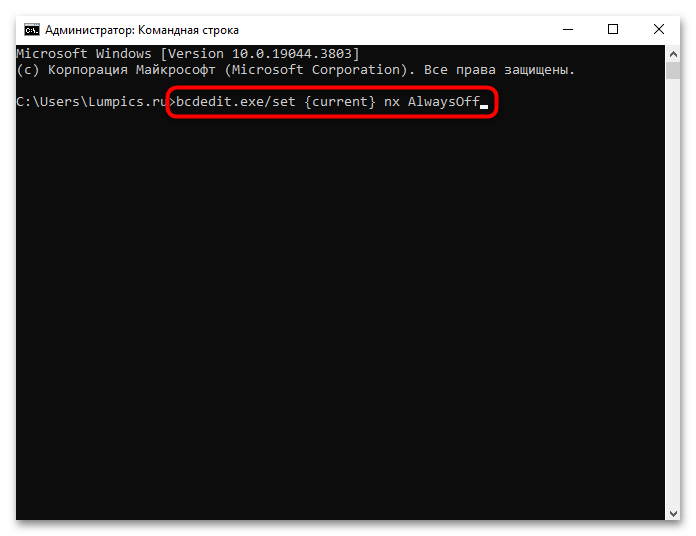

После того как операция будет выполнена, вы увидите соответствующее сообщение об успешном завершении в окне консоли. Перезагрузите компьютер, чтобы новые настройки вступили в силу.
Способ 2: «Панель управления»
Если в предыдущем способе была разобрана инструкция для отключения/включения DEP для всех приложений и средств, то в этом мы рассмотрим, как выполнить это для определенных программ. Случай, когда надо деактивировать технологию для приложения, вызывающую различные ошибки из-за блокировки средством защиты, является наиболее целесообразным и оптимальным, чем руководство в Способе 1.
- Откройте классическую «Панель управления», отыскав средство через системный поиск.
- Выберите отображение разделов как крупные или мелкие значки, затем перейдите в «Система».
- Далее кликните по строке «Дополнительные параметры системы» на левой панели.
- На вкладке «Дополнительно» выберите кнопку «Параметры» в блоке «Быстродействие».
- Перейдите на вкладку «Предотвращение выполнения данных», затем отметьте пункт «Включить DEP для всех программ и служб, кроме выбранных ниже».
- Кнопка «Добавить», расположенная ниже, станет активна – кликните по ней.
- Укажите путь к программе, для которой нужно отключить технологию. Подтвердите действие. В предыдущем окне останется применить и сохранить настройки.
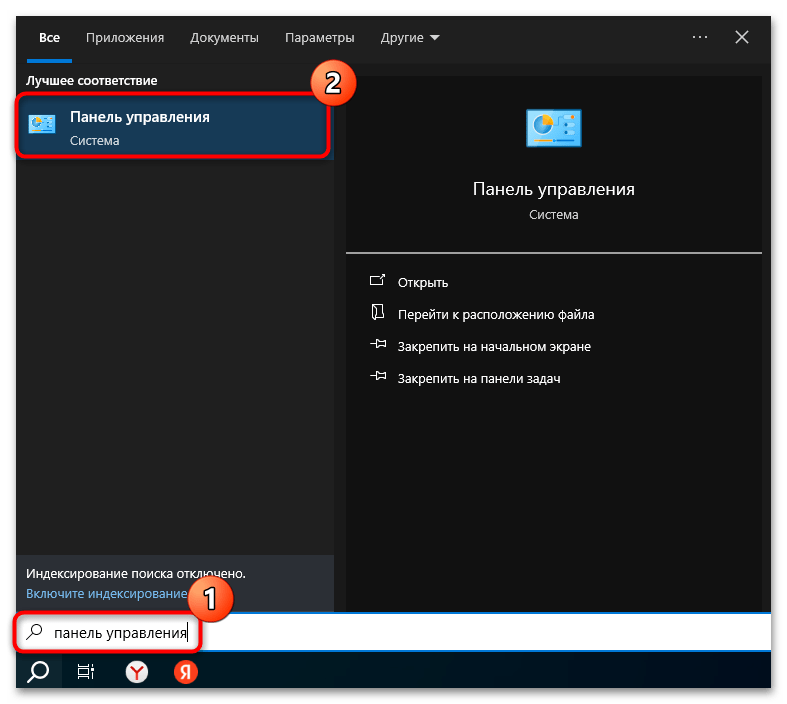
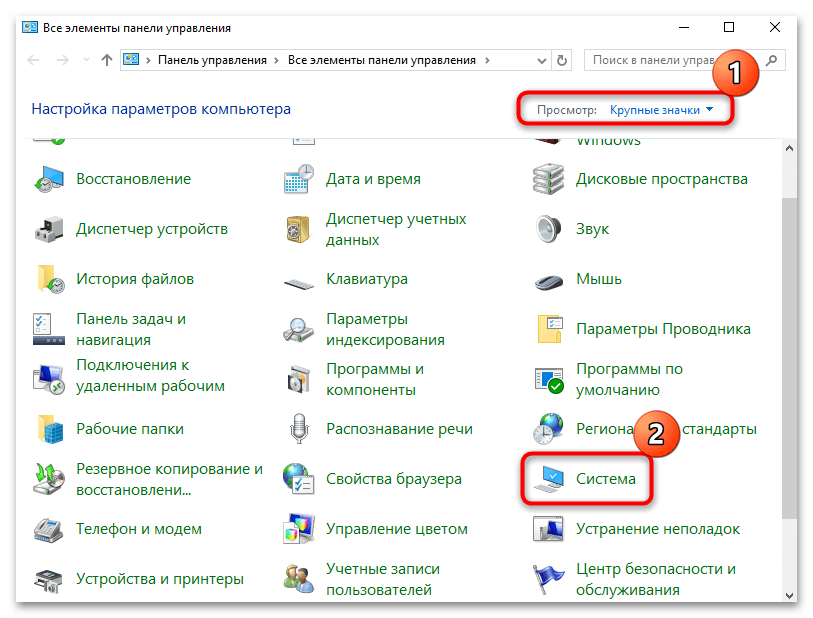
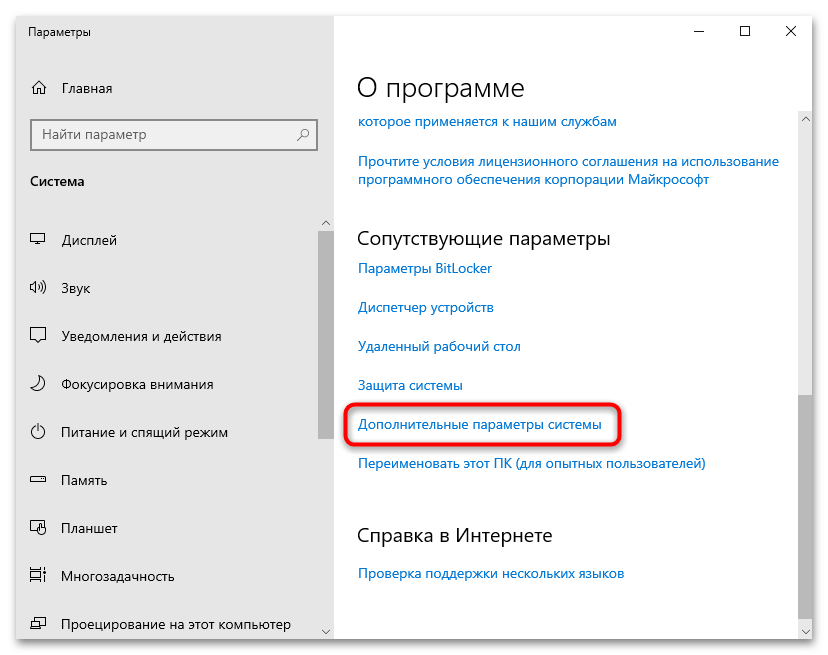

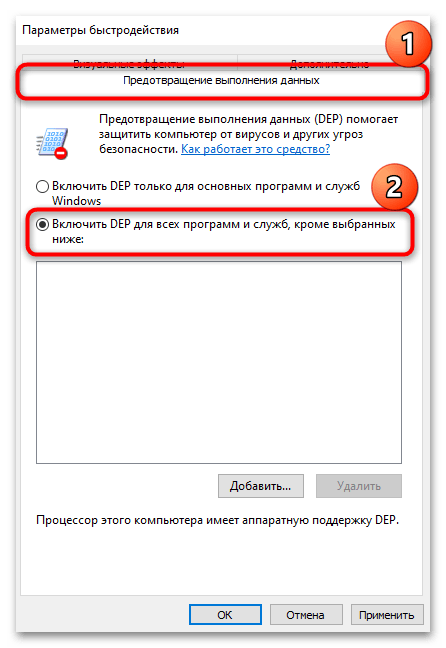
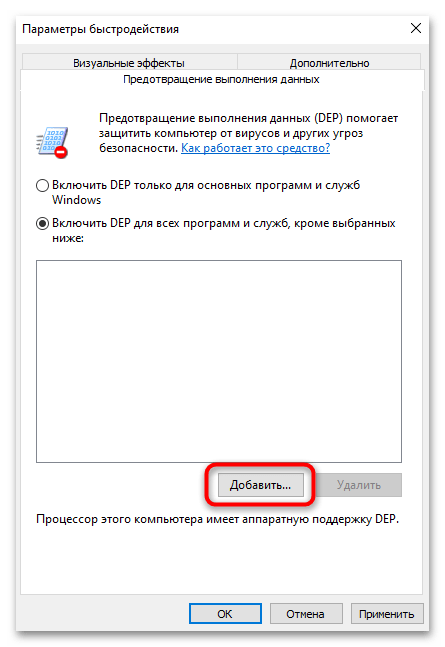
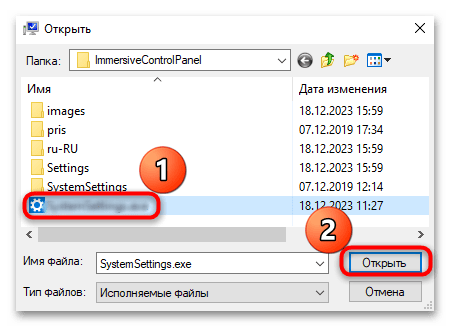
Чтобы включить DEP для конкретной программы, достаточно удалить ее из списка исключений в окне «Параметры быстродействия» — выделите ее, затем нажмите на кнопку «Удалить». Для временного включения «Предотвращения выполнения данных» достаточно снять галочку у софта, затем применить и сохранить настройки.
Следует отметить, что данный алгоритм действий срабатывает не со всеми программами. Если деактивировать функцию невозможно, система об этом оповестит, а вы, в свою очередь, лучше проверьте проблемное приложение на наличие вредоносного кода.
Способ 3: Редактирование реестра
Также отключить DEP для определенных программ можно и через «Редактор реестра». Суть метода заключается в том, что в специальном разделе реестра будет пополняться список программ, которые начнут игнорироваться встроенной технологией.
- Запустите «Редактор реестра». Для этого вызовите диалоговое окно «Выполнить», одновременно нажав на клавиши «Win + R», затем введите запрос
regeditи нажмите на кнопку «ОК». - Разверните ветку
HKEY_LOCAL_MACHINE\SOFTWARE\Microsoft\WindowsNT\CurrentVersion\AppCompatFlags\Layersили вставьте данный путь в адресную строку вверху. - Если раздела «Layers» нет, то его надо создать: кликните правой кнопкой мыши по названию предыдущего каталога «AppCompatFlags», наведите курсор на пункт «Создать» и выберите «Раздел». Присвойте ему имя – «Layers».
- Кликните правой кнопкой мыши по свободной области центральной части окна при выбранном разделе «Layers», затем создайте строковый параметр через контекстное меню.
- В качестве имени используйте путь к исполняемому файлу программы, которую нужно добавить в список исключений для DEP. Например, это будет выглядеть так:
D:\progs\AIMP.exe, если EXE-файл находится на локальном диске «D» в папке «progs». - Дважды кликните левой кнопкой мыши по созданному параметру и в поле «Значение» введите
DisableNXShowUIи сохраните настройку.
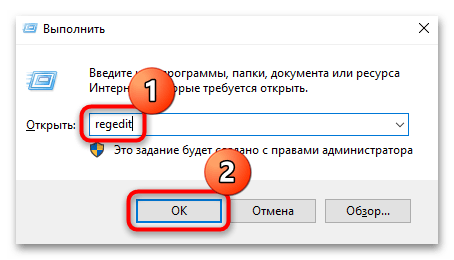
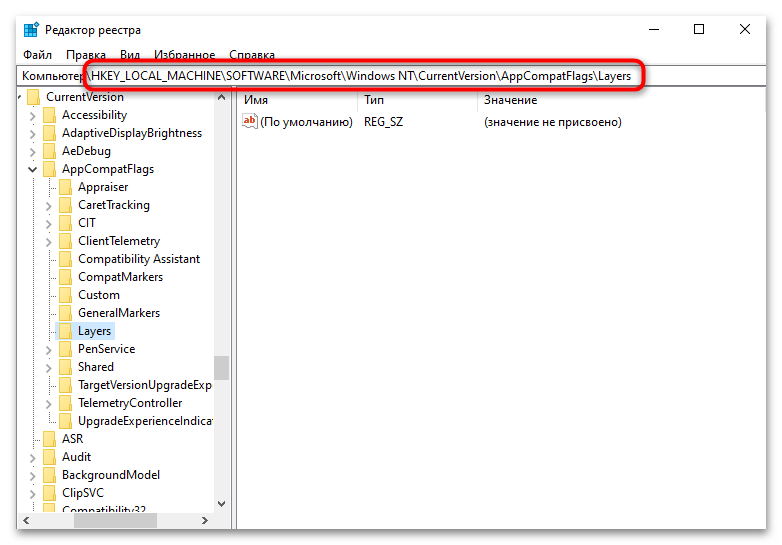
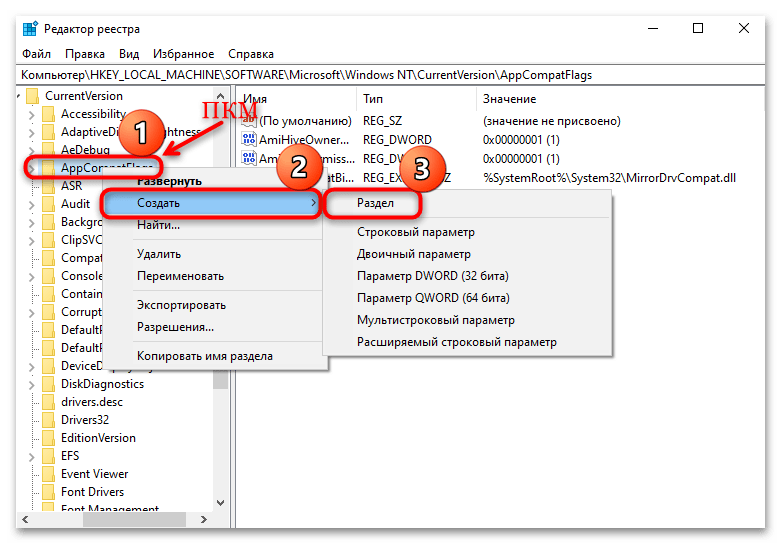
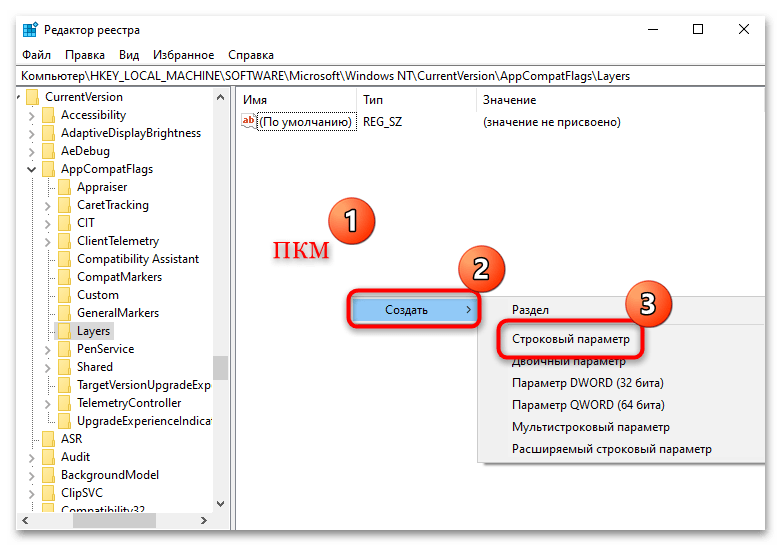
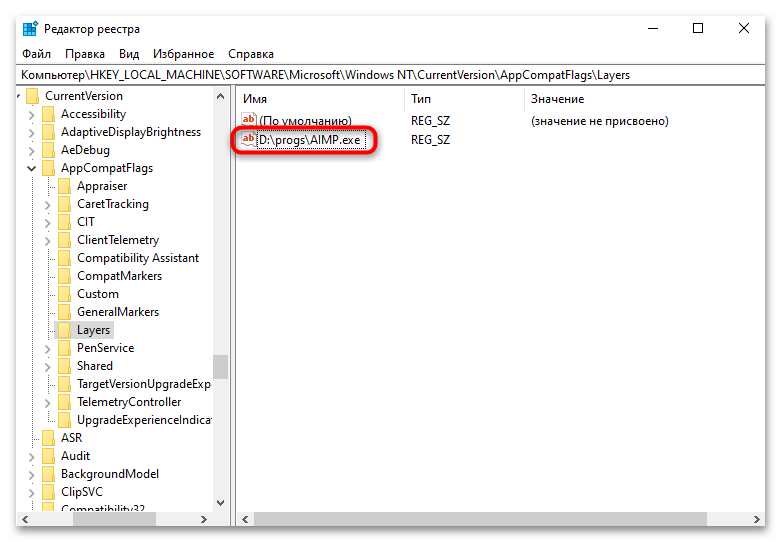
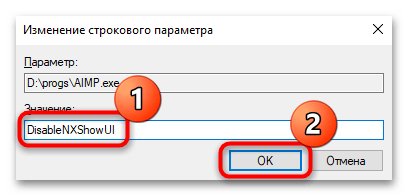
То же самое можно проделать с любыми другими программами, которые установлены на компьютер. Добавляйте их в этот список. Для включения DEP достаточно удалить параметр, отвечающий за определенное приложение или утилиту: кликните по нему правой кнопкой мыши, выберите пункт «Удалить» и подтвердите действие.
Когда все желаемые правки будут внесены в системный реестр, перезагрузите Windows 10, чтобы настройки были зафиксированы.
Наша группа в TelegramПолезные советы и помощь
By managing Data Execution Prevention (DEP) in Windows 10 and 11, you can provide an additional layer of protection to your computer from unknown scripts. By default, this Windows’ built-in security tool is enabled which safeguards all programs and services of Windows. Basically, this feature prevents harmful applications from executing unrecognized codes on the reserved locations of system memory.
DEP commonly works in the background but when it is turned on for all programs, you may confront issues with certain applications. In that case, you should add them to the execution list so that DEP will not scan them during the execution. You can also include some device drivers on the list because the OS may consider them as a threat due to digital signature status. So, let us advance to the sequence of steps in order to Disable/Enable Data Execution Prevention (DEP) in Windows 11 or 10.
Disable and Enable Data Execution Prevention (DEP) in Windows 11 and 10
Here is how to Disable/Enable Data Execution Prevention (DEP) in Windows 11 or 10 –
Via System Properties
Step-1: Go to the desktop and make a right-click on This PC icon. From the context menu, select Properties. If needed see – How to Bring This PC icon on Windows 10 Desktop Quickly.
Step-2: From the Settings app that opens up, click Advanced system settings.
Step-3: On the System Properties dialog, switch to the Advanced tab. Moving further, hit the Settings button underneath the Performance section.
Step-4: This will open Performance Options dialog on the PC screen. Shift to the Data Execution Prevention tab. Here, you will see two options namely:
“Turn on DEP for essential Windows programs and services only“: This is the default setting. It will provide protection against threats and viruses for certain services and applications of Windows only.
“Turn on DEP for all programs and services except those I select“: It is the second option. Not just Windows processes only, this option will also enable the feature for all processes.
Step-5: So, depending on your requirement choose the DEP for services and programs accordingly.
Step-6: If you are having any problem with a specific program, prefer to check the second option. Then, click the Add button and browse to the location of that application’s executable file.
Using Command Prompt
Open Run dialog box by hitting “Win + R” hotkeys altogether. Here, type cmd and hit Ctrl + Shift + Enter.
When UAC prompts up, hit Yes to proceed ahead.
To Disable Data Execution Prevention
Now, on the Command Prompt window, type or copy/paste this given below command and then hit Enter.
bcdedit.exe /set {current} nx AlwaysOff
After executing the command successfully, close the window and start running a program.
To Enable Data Execution Prevention
Type cmd on Cortana and perform a right-click on Command Prompt Desktop app. From the menu that appears, choose “Run as administrator“. Click Yes when UAC shows up on the PC screen.
For reference, see How to Launch Elevated Command Prompt on Windows 10.
Next, copy and paste the below command and hit Enter to enable the feature.
bcdedit.exe /set {current} nx AlwaysOn
Finally, restart Windows 10 PC after executing the command to make effective changes.
Hopefully, you will be now available to Disable/Enable Data Execution Prevention (DEP) in Windows 10 pretty easily.
Download Windows Speedup Tool to fix errors and make PC run faster
We have already seen how Data Execution Prevention, a security feature can help prevent damage to your Windows 11/10/8/7 computer from viruses and other security threats. Harmful programs that try to attack Windows by attempting to execute code from system memory locations reserved for Windows and other authorized programs are stopped. These types of attacks can harm your programs and files. DEP can help protect your computer by monitoring your programs to make sure that they use system memory safely. If DEP notices a program on your computer using memory incorrectly, it closes the program and notifies you. It is a security feature.
While it is not recommended, you may have your reasons for wanting to disable Data Execution Prevention on your Windows computer. Lets us see how to disable DEP in Windows 11/10 using the bcdedit.exe tool.
Before you begin, you need to make sure that Secure Boot has been disabled on your system; else you may see The value is protected by Secure Boot policy and cannot be modified or deleted error message,
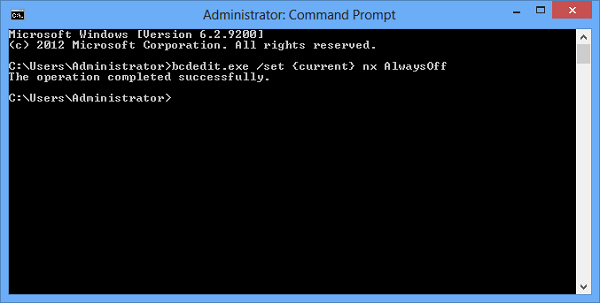
Type cmd in Start Search. Right-click on search results ‘cmd’ and click on Run as Administrator. You can also open an elevated command prompt window via the WinX menu.
Then, copy-paste the following and hit Enter:
bcdedit.exe /set {current} nx AlwaysOff
You will see the message – The operation completed successfully.
Reboot.
You will find that Data Execution Prevention has been disabled on your Windows computer.
You may then, if you wish, verify the status of the Data Execution Prevention feature on your system.
Enable Data Execution Prevention in Windows 11/10
To enable back DEP, type the following in an elevated command prompt and hit Enter:
bcdedit.exe /set {current} nx AlwaysOn
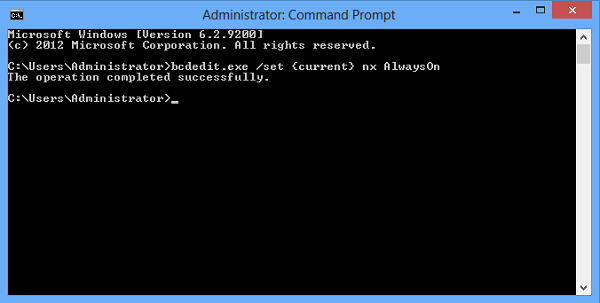
This will enable back Data Execution Prevention.
Turn on or off DEP in Windows via System Properties
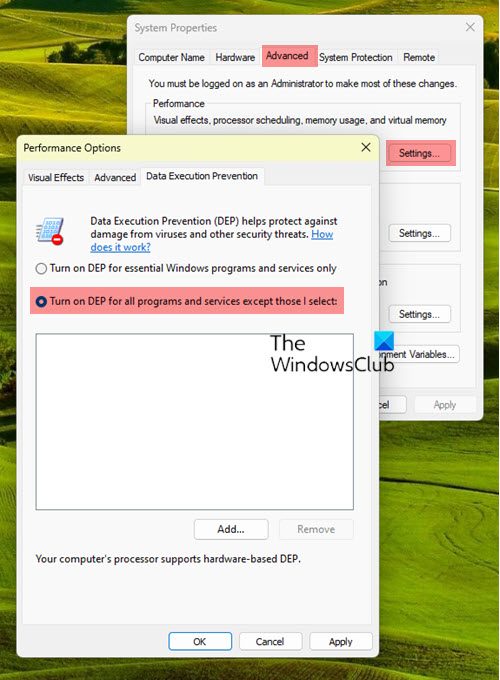
You can also Turn on or off DEP via System Properties as follows:
- First, press the Win+R hotkey to open the Run dialog box and enter sysdm.cpl in it to launch System Properties.
- Now, move to the Advanced tab inside the System Properties window and tap on Settings under Performance.
- After that, navigate to the Data Execution Prevention tab and select the Turn on DEP option that suits your requirement.
- Next, press the Apply > OK button to save changes.
See this if you receive The boot configuration data store could not be opened message.
How do I find DEP in Windows 11?
DEP stands for Data Execution Prevention. It is a set of hardware and software technologies that protect your system’s memory against malicious code exploits. To check whether hardware-enforced DEP is available on your computer or not, you can use the wmic command. Open the command prompt and execute the following command. If the output is true, your system has hardware-enforced DEP.
wmic OS Get DataExecutionPrevention_Available
Is disabling DEP safe?
As explained earlier in this article, DEP is a security feature that helps prevent damage to your Windows 11/10/8/7 computer from viruses and other security threats. If you disable it, your system’s memory will become prone to attacks because malicious codes can be executed there. Hence, disabling DEP is not safe.
Read: Turn Off or On Data Execution Prevention (DEP) for Individual Programs.
Anand Khanse is the Admin of TheWindowsClub.com, a 10-year Microsoft MVP (2006-16) & a Windows Insider MVP (2016-2022). Please read the entire post & the comments first, create a System Restore Point before making any changes to your system & be careful about any 3rd-party offers while installing freeware.
Reader Interactions

Data Execution Prevention or DEP is a security feature that was introduced in Windows Vista.
hreats. DEP can protect your computer by monitoring programs to ensure the safe operation of system memory. If a program tries to run (also known as executable) code from memory incorrectly, DEP closes the program. Sometimes due to this prohibition, various errors may occur when launching applications or games. By this, we will look at how to disable and enable data execution prevention (DEP) in Windows 10/8/7.
Disable data execution prevention
To disable DEP, open a command prompt as an administrator and enter the following command, and then restart the PC for the changes to take effect.
bcdedit.exe / set {current} nx AlwaysOff

Related post : netio.sys: BSOD blue screen errors in Windows 10
Enable data execution prevention
To turn DEP back on, open a command prompt as an administrator and enter the command.
bcdedit.exe / set {current} nx AlwaysOn

Related post : How to show hidden folders in Windows 10/8/7/XP
Back to top button
Turn Off DEP in Windows 10: Sometime Data Execution prevention causes an error and in that case it important to turn it off and in this article, we are going to see exactly how to turn off DEP.
Data Execution Prevention (DEP) is a security feature that can help prevent damage to your computer from viruses and other security threats. Harmful programs can try to attack Windows by attempting to run (also known as execute) code from system memory locations reserved for Windows and other authorized programs. These types of attacks can harm your programs and files.
DEP can help protect your computer by monitoring your programs to make sure that they use system memory safely. If DEP notices a program on your computer using memory incorrectly, it closes the program and notifies you.

You can easily turn off Data execution prevention for a particular program by the following steps below:
NOTE: DEP can be turned off globally for the entire system but it’s not recommended as it will make your computer less secure.
1. Right-click on My Computer or This PC and choose Properties. Then click on Advanced system settings in the left panel.

2. In Advanced tab click on Settings under Performance.

3. In the Performance Options window, click on the Data Execution Prevention tab.

Now you have two options as you can see, by default DEP is turned on for essential Windows programs and services and if the second one is selected, it will turn on DEP for all programs and services (not just Windows) except those which you select.
4. If you are facing issues with a program then select the second radio button which would Turn on DEP for all programs and services except those you select and then add the program that is having the problem. However, DEP is now turned on for every other program in Windows and you might end up where you started i.e. you may start having the same problem with other Windows programs. In that case, you have to manually add each program that is having a problem to the exception list.
5. Click the Add button and browse to the location of the program’s executable you want to remove from DEP protection.

NOTE: While adding programs to the exception list you might get an error message saying “You can not set DEP attributes on 64-bit executables” when adding a 64-bit executable to the exception list. However, there is nothing to worry about as it means your computer is 64-bit and your processor already supports hardware-based DEP.

Your computer’s processor supports hardware-based DEP means that all the 64-bit processes are always protected and the only way to prevent DEP from protecting a 64-bit application is to turn it off completely. You cannot manually turn off DEP, in order to do so you have to use the command line.
Turn DEP Always On or Always Off using Command Prompt
Turning DEP always on means it will be always on for all processes in Windows and you cannot exempt any process or program from protection and turning DEP always off means it will be completely turned off and no process or program including Windows will be protected. Let’s see how to enable both of them:
1. Right-click on the windows button and select Command Prompt (Admin).
2. In cmd (command prompt) type these following commands and hit enter:
To always turn on DEP: bcdedit.exe /set {current} nx AlwaysOn
To always turn off DEP: bcdedit.exe /set {current} nx AlwaysOff

3. There is no need to run both of the commands, as shown above, you only need to run one. You will also need to restart your PC after any change you made to DEP. After you have used one of the above commands, you will notice that the windows interface for changing DEP settings has been disabled, so only use command-line options as a last resort.
You may also like:
- How to fix 0xc000007b Application Error
- How to Repair Icon Cache in Windows 10
- How to fix COM Surrogate has stopped working
- How to create system restore point – the easy way
That’s it you have successfully learned How to turn Off DEP (Data Execution Prevention). So this is all we can discuss DEP, how to turn DEP off, and how to always turn DEP on/off and if you still have doubt or question regarding anything feel free to comment.
